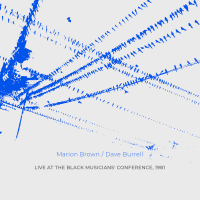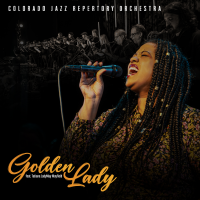Home » Jazz Articles » Book Review » The History Of European Jazz: The Music, Musicians And A...
The History Of European Jazz: The Music, Musicians And Audience in Context
 The History Of European Jazz: The Music, Musicians And Audience In Context
The History Of European Jazz: The Music, Musicians And Audience In Context Various authors/Edited by Francesco Martinelli
741 Pages
ISBN: 13 978 1 78179 446 3
Equinox Publishing
2018
It's taken some time, about a century in fact, but finally, thanks chiefly to editor and jazz historian Francesco Martinelli of Siena Jazz, the first comprehensive, pan-European history of jazz sees the light of day. And what stories they are too -complex, colorful and sometimes tinged with tragedy. Though jazz celebrated its centenary in 1917, what this book demonstrates time and again is the longer historical view, whereby the back and forth migrations of people between continents and across national borders over many centuries, and the cultural exchanges and assimilations along the way, have all fed, and continue to feed, into the complex mosaic that is jazz.
There have been excellent jazz histories of individual countries to be sure, and sweeping—and generally less satisfying—historical overviews of European jazz are not uncommon, but for its scope, detail and academic rigour The History of European Jazz: The Music, Musicians and Audiences in Context is simply unprecedented in its ambition. What also sets it apart from most general European jazz histories is the fact that the jazz histories of the forty-odd countries examined herein have been written by experts native to their respective countries, ensuring an authenticity and insight that would be missing from any single author's necessarily narrow overview.
The chapter authors are, without exception, distinguished jazz journalists, authors, promoters, academics and curators. Mladen 'Mike' Mazur, who contributes to the chapters on the states within the ex-Yugoslavia has been promoting jazz since the late 1950s. Krystian Brodacki, the Polish chapter author, has been a jazz journalist since 1968. These are just two examples, but they typify the insider knowledge and unique expertise that characterize the book.
The book chapters are divided into Western Europe (seven countries), Scandinavia (five countries), Central Europe (seven countries), Eastern Europe (three countries), South-West Europe (three countries), The Baltic States (three countries), South-East Europe (ten countries including the autonomous province of Vojvodina) and Europe/Asia (three countries). Each chapter concludes with a bibliography and a rough listening guide, both of which serve as entry points for further digging. Six themed chapters address early African-American entertainers in Europe, Django Reinhardt and jazz manouche, the influence of Jewish music, the avant-garde and the cross-Atlantic dialog, jazz in films, and finally, jazz festivals.
At seven hundred and forty pages The History of European Jazz... is relatively concise. It seems strange, at first, that any number of historically significant figures, like Swedish pianists Jan Johansson and Esbjorn Svensson, or Polish trumpeter Tomasz Stańko, for example, warrant only a paragraph or two, but limitations of space dictate that the narrative flow does not get bogged down in personalities, and instead highlights significant movements, innovations, recordings and cross-pollinations. Of course, the major figures of each country are duly represented, as are some fascinating, lesser known musicians.
Take for example Aquilino Calzado Gonzalez, a Cuban saxophonist who visited Spain in the 1930s to explore flamenco, anticipating the work of Pedro Iturralde—with Paco de Lucia—some thirty years later. Or Josephine Alexandra Mitchell, an Irish tenor saxophonist who toured Europe in the 1920s with her own ensemble, sharing the stage with Coleman Hawkins and Django Reinhardt. The inclusion of these obscure, though evidently trailblazing musicians underlines one of the book's intended aims as a starting point for further research.
With the centenary of jazz recently computed, it may also seem peculiar that most of the chapter histories conclude at the end of the twentieth century, an acknowledgment that greater perspective is needed to get to grips with the ever-evolving landscape of jazz in the first two decades of the twentieth first century. What is almost certain is that in any similar history written, say, two or three decades hence, female jazz musicians will occupy a meatier narrative role than their peripheral counterparts in this book. As Martinelli explains in a wide-ranging interview related to the book with All About Jazz, the original desire to include a chapter specifically on female jazz musicians was impracticable due to a general lack of archival information.
Leaping off the pages is the often pointed racism which greeted early African-American entertainers Europe-wide. "Real Ragtime by Real Darkies" proclaimed the Daily Herald with regards to the appearance of Wil Marion Cook's Southern Syncopated Orchestra in Britain in 1919. Elsewhere, more vicious racial slurs compared the early apparitions of jazz in Europe to paganism, the music of savages, and so on. Audiences and musicians everywhere, however, were in thrall to American jazz, so much so that it wasn't until the 1960s and free improvisation that a distinctly European response to jazz began to emerge.
Any American jazz historians/academics who perceive that The History of European Jazz... is an attempt to rewrite American jazz-origins narratives would be partly right, as Martinelli's persuasive introduction to the book—as well as his chapter on Italy—invite consideration of the Cuban, Brazilian and European musical influences present at the so-called birth of jazz in New Orleans. That said, the European jazz musicans/fans' love of the Afro-American jazz idiom, and their reverence for its pioneers and key practitioners is a constantly recurring theme of an extremely balanced book.
If the struggle for musical identity is an important sub-plot of this book, it's striking how few European jazz musicians looked to their own national music forms for alternative sources of inspiration; Lars Gullin and the aforementioned Jan Johansson in Sweden, Vagif Mustafazadeh in Azerbaijan, Krzysztof Komeda in Poland, Dusko Goykovich in the Balkans, Albert Mangelsdorff in Germany, Edward Vesala in Finland, Joe Harriott in England and Gyorgy Szabados in Hungary being the most notable exceptions. By the end of the century, by way of contrast, experimentation in European jazz would become almost a norm, with the borders between genres becoming increasingly blurred.
The great political upheavals that beset Europe in the twentieth century—the often violent affirmations of nationalism, the wars and ideological divisions—all affected jazz in one way or another. At various times jazz was vilified by the church and would find itself censored and nominally banned by authoritarian regimes who perceived this American music as a threat to purist, nationalist ideals. Yet in Communist Poland and Azerbaijan, in Nazi Germany, in Fascist Spain and Portugal and under the military junta of 1960s/1970s Greece, jazz proved to be remarkably resilient.
So too the editors of this remarkable tome. All bar four of the chapters were submitted in English and Series Editor Alyn Shipton (who contributes one of the two chapters on Great Britain) deserves plaudits for whipping the English into uniformly robust shape. Production Editor Dean Bargh was responsible for the professional, attractive look of the book, replete as it is with photographs. Credit must also go to Equinox Publishing for its commitment to a major project that soon went over budget and that is significantly longer than originally envisioned.
Six years in the making, The History of European Jazz... is the result of a mammoth collective effort, of research, cross-referencing, translation and consultation with linguistic experts. It's been no small feat to tell the story of European jazz in fewer pages than your typical Stephen King novel. Without the vision and dogged persistence of chief editor Francesco Martinelli, however, this fascinating book would likely have remained little more than a pipe dream.
A ground-breaking history that acknowledges the trans-national, multi-cultural roots of jazz, The History of European Jazz: The Music, Musicians and Audiences in Context sets a benchmark for studies in European, and indeed, global jazz. It is almost certain to foster debate on the one hand, and to stimulate further research for years to come on the other. Either or both outcomes will constitute a significant legacy.
Tags
PREVIOUS / NEXT
Support All About Jazz
 All About Jazz has been a pillar of jazz since 1995, championing it as an art form and, more importantly, supporting the musicians who make it. Our enduring commitment has made "AAJ" one of the most culturally important websites of its kind, read by hundreds of thousands of fans, musicians and industry figures every month.
All About Jazz has been a pillar of jazz since 1995, championing it as an art form and, more importantly, supporting the musicians who make it. Our enduring commitment has made "AAJ" one of the most culturally important websites of its kind, read by hundreds of thousands of fans, musicians and industry figures every month.



























